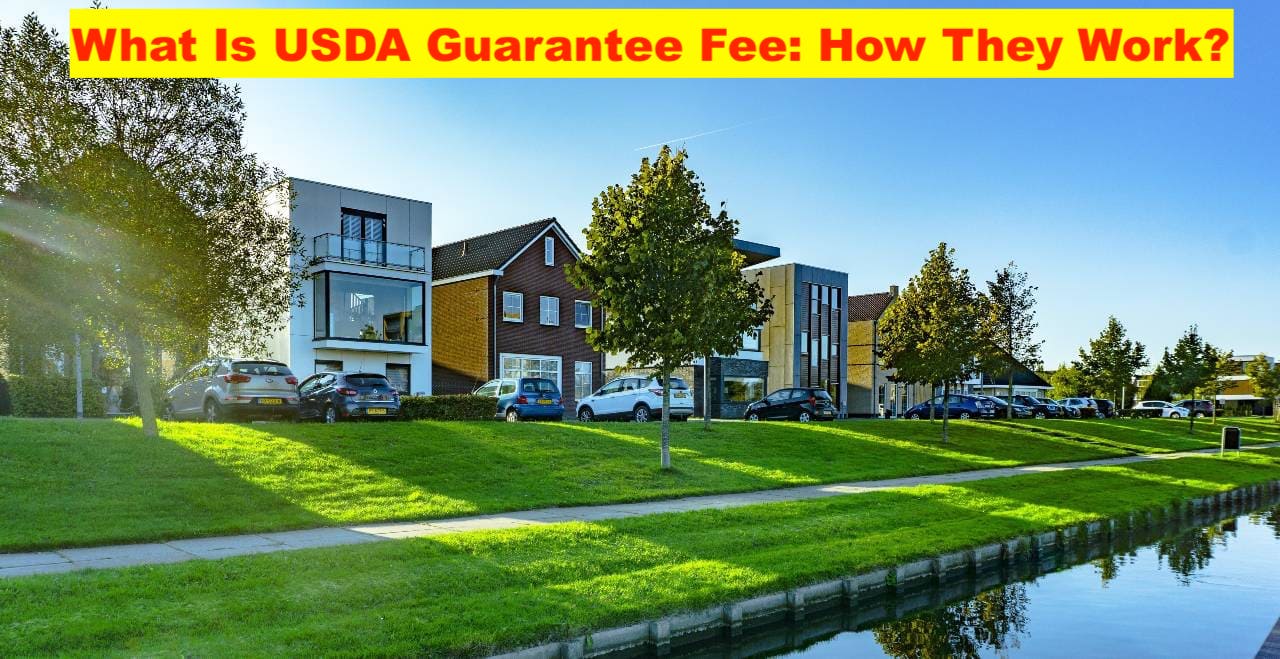USDA Guarantee Fee works like mortgage insurance in helping to guarantee the USDA Mortgage Loans. The USDA Guarantee Fee is lower than similar fees on similar loans, but USDA borrowers should still be aware of these fees and how it works. The USDA Mortgage Loans are issued through the United States Department of Agriculture and offer rural homeowners access to low-interest rates and zero down payment. USDA Mortgage Loans are a type of Mortgage. These Loans are geared toward lower-income homebuyers in areas deemed rural by the United States Department of Agriculture.
The USDA Mortgage Loans don’t require a down payment, which removes a substantial barrier to homeownership that many would-be homebuyers encounter. When it comes to Interest rates USDA Loans are comparable to VA Loans in that these Mortgage Loans typically offer lower rates than other loan programs, such as conventional loans or FHA Mortgage Loans. The core basis of the USDA Loan is the USDA Guarantee Fee. It helps enable to USDA Loan to make these Mortgages available and essentially functions as Mortgage Insurance for the USDA Loan.
USDA Says it does not require Mortgage Insurance to qualify for the USDA Loans. Yes, it is true, however, the USDA charges Guarantee fees which serve a similar purpose. The USDA Loans are backed by the government, it are still issued by Mortgage Lenders. However, if the Borrowers fail to repay their mortgage loan then the USDA protects the Mortgage Lenders against losses. When a Borrower gets a USDA Mortgage Loan, they pay upfront Guarantee Fee and Annual Fees. Usually, the lender passes a non-refundable upfront fee cost on to the borrower.
What Is USDA Guarantee Fee?
With the USDA Mortgage Loan a borrowers have to pay an Upfront Guarantee Fee and an Annual Fee. Similar to VA Loans, USDA Loans don’t technically require Mortgage Insurance, but they do have what’s called the USDA Guarantee Fee, which works similarly to mortgage insurance in helping to Guarantee the Loan. When a government agency backs on a loan, such as a USDA Loan or FHA Loan, they are essentially providing Mortgage Insurance to the Mortgage Lenders. If the borrower defaults on the government-backed loan, then the agency pays the lenders to help them recoup their losses. Fees that come with USDA Loans such as the USDA Guarantee Fee help pay for that insurance.

How Does the USDA Guarantee Fee Work?
There are two types of fees associated with USDA Guarantee Fee such as Upfront Guarantee Fees and Annual USDA Loan Fees. Let’s take a closer look at how USDA Guarantee Fee Works.
- Upfront Guarantee Fee: To qualify for the USDA Mortgage Loans, eligible homebuyers need to pay the upfront guarantee fee, which is usually added to the initial loan amount and paid at closing. At present the upfront guarantee fee is 1% of the Loan amount, as noted. Though it’s called an “upfront” fee, homeowners don’t necessarily have to pay it upfront themselves. The USDA Mortgage Loan borrowers can choose to include the cost of their upfront guarantee fee in their loan.
- Annual USDA Loan Fee: The Annual USDA Loan Fee is usually financed into USDA Loan. At Present, the Annual USDA Loan Fee is 0.35% of the loan amount. The homebuyers have to pay this fee monthly as part of their monthly mortgage payment until the loan is paid in full. Homeowners won’t pay it once per year in a lump sum. Instead, they will pay a portion each month as part of their monthly mortgage payment.
How To Calculate USDA Guarantee Fee?
One of the major benefits of the USDA Mortgage Loan is that they guarantee the loan from banks and other mortgage lenders. However, in exchange for this guarantee, the homebuyers will be required to pay both the USDA upfront Guarantee Fee upon closing the mortgage loan and the annual Guarantee fee each year thereafter. The maximum amount the homeowners can be charged for the USDA Guarantee Fee is 3.5% of the loan value. The total loan amount can include closing costs, property upgrades, property taxes, and other necessary furnishings to the home.
What Are the USDA Loan Qualification Requirements?
Homebuyers who are in low-to-moderate-income households with a Debt-to-income ratio (DTI) of 41% may be eligible to qualify for the USDA Mortgage Loans. However, the homebuyers will face some additional requirements that are listed below:
- Must be a Legal resident or Citizen: The borrowers should have citizenship or be legal permanent residents in the United States of America.
- Must have a credit score of at least 640: Most lenders require homebuyers to have a credit score of at least 640. However, if a borrower has a lower score or limited credit history, they may still qualify for USDA Mortgage Loan.
- Must have stable and dependable Income: Lenders want to make sure the homebuyers are able to pay their mortgage loan every month.
- Must have a clean Credit History: The borrowers must not have a history of any late payments or collections.
- Income must be within the USDA Guidelines: The household income must be less than or equal to 115% of the area median income.
- Must be primary residents of Rural Areas: The homebuyers need also choose to live in the home as their primary residence and it should fall under the qualified rural area.
What Are the Types of USDA Mortgage Loans?
There are following two types of USDA Mortgage Loans. Here is the breakdown of each:
- USDA Guarantee Loan: The borrower’s adjusted household income can’t exceed more than 115% of the median family income in the designated rural area where they prefer to live.
- USDA Direct Loan: The home must meet the criteria as under 2,000 square feet or less and should stay within applicable loan limits for the area, it cannot be planned for income-producing activities and cannot have an in-ground swimming pool. Homeowners with low- to very low incomes can take help from the direct USDA loan. Qualifying borrowers’ income needs fall at or below the low-income limit in a deligated area.
Frequently Asked Questions (FAQs)
Question 1: Do I have to pay the USDA Guarantee Fee If I am Refinancing?
Answer: Yes, Whether you are purchasing a home or refinancing your current mortgage with the USDA Mortgage Loans, You have to pay the 1% upfront guarantee fee and a 0.35% annual fee.
Question 2: Paying PMI, MIP, Or The USDA’s Guarantee Fee, Which is Better?
Answer: The exact cost of Private Mortgage Insurance (PMI) on a Conventional Loan can vary depending on various factors including homebuyers’ credit score and the Loan-to-Value (LTV) ratio. The PMI Rates are typically between 0.1 to 2% of the loan amount each year. For FHA Loans and VA Loans mortgage insurance or funding fee costs will depend on certain aspects of Mortgage Loans, such as the size of the down payment and, in the case of VA loans, whether they have used the program before.
The Bottom Lines
When a homebuyer buys a home with a USDA loan, then they will have to pay the Upfront Guarantee Fee and an Annual Fee. These fees are relatively small and are imposed to help the homeowners more easily get into a home in their preferred area. However, USDA loans can be tricky to qualify for, even if homebuyers are willing to pay the USDA guarantee fee.
